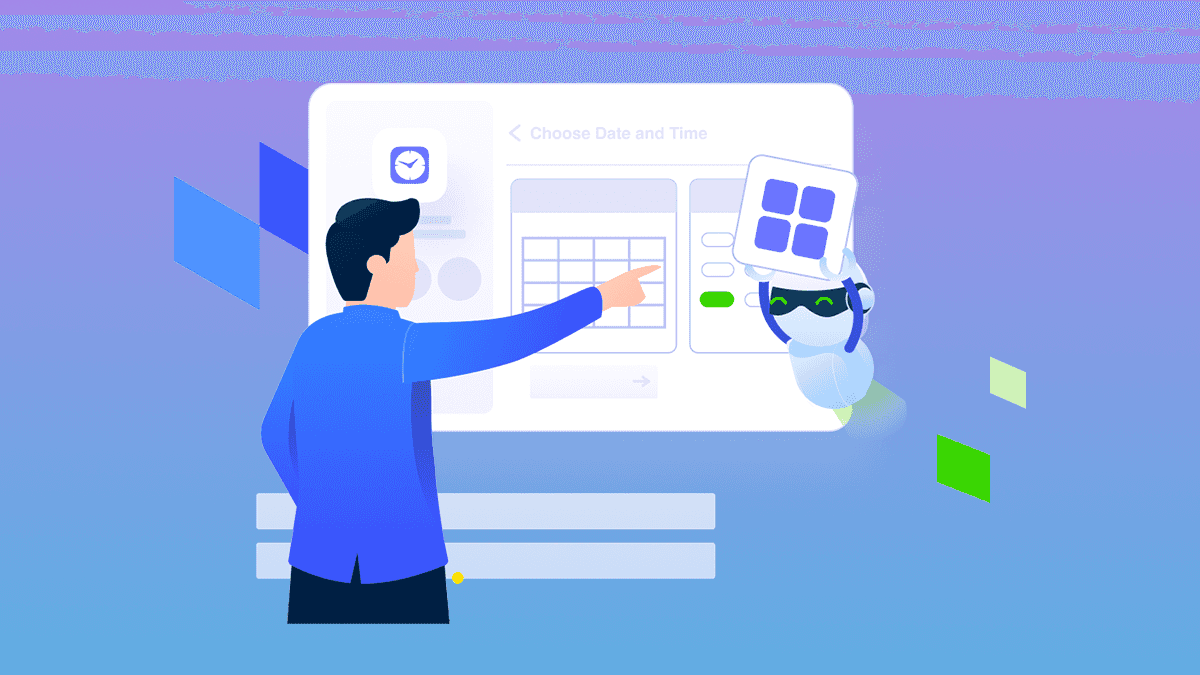March 15, 2024
How Online Scheduling Transforms Businesses
Transform your business with online scheduling. Discover how OnSched’s API empowers companies to streamline internal events, service bookings, and amenities management. From eliminating back-and-forth emails to automating service appointments, online scheduling improves efficiency, customer satisfaction, and operational insights. Whether you're managing meetings, booking services, or reserving shared amenities, OnSched’s flexible scheduling solutions provide a seamless experience for both businesses and users. Explore the future of scheduling and start integrating OnSched’s powerful API today. Book an intro call to get started with a free trial.
Collaboration
10 Min Read
In this article, we will discuss how scheduling workflows have become a standard offering for many businesses, and how this will impact the manual high-touch processes of yesterday.
Types of scheduling
In our experience, the OnSched API has been used to solve three main use-cases:
Internal events;
Service bookings; and
Amenities management.
Let’s dig into each of these use-cases to understand their evolution and how scheduling drives the process.
Internal Events
We are all used to regular recurring calls and meetings, but let’s compare how we used to handle meeting requests in the past, and how we do that now.
Before:
You called or emailed your colleague to go back and forth to find a time that works for both of you, often picking something next week while missing an open time slot for later today because you don’t have full visibility into each other’s calendars. Imagine the nightmare if there were multiple users each with their own busy schedules.
Now:
We check out our colleagues’ availability in our Google Workspace shared calendar by adding their email(s) as an invitee(s), then pick a time, add a meeting link, and send the invite. If the proposed time doesn’t work, your colleagues can easily propose a new time in two clicks from the invite they have received.
Meetings can be quite a commitment for your invitees, and pushing a meeting to next week just because you didn’t realize there was a time slot available sooner, could cost you both a deadline - which cascades down to all other dependent tasks.
Service Bookings
Standards of customer service have been rising for decades. Informed consumers know what they want and when they want it. And so, businesses are adapting while benefiting from innovation in other ways.
Before:
You called the number you found on the website or got from a friend during your lunchtime. You were placed on hold, then went back and forth with the receptionist to end up picking a not-so-perfect time. It was even worse if you couldn’t schedule your service ahead of time or just had to walk in and wait for an unknown period of time.
Now:
You go to the business's website, click “Book”, and you are instantly presented with the vendor’s availability for the next seven days. You check your own calendar and pick a time that works for you, accounting for the commute. The next iteration of this type of booking would be - securely displaying your and the business’s availability in one place.
Two corollary benefits that accrue to businesses are:
(i) Saving receptionist/administrator time (or eliminating the role altogether);
and
(ii) Providing valuable consumer data about what your customers want and when they want it. This will undoubtedly inform future optimizations and improve customer service on a larger scale
Customers will enjoy scheduling services at their convenience as it saves them time and provides an appointment reminder. Automating appointment scheduling is a win-win for both customers and businesses. Online scheduling becomes a lifesaver for many and a critical part of the business model for some. If you would like to consult with an OnSched specialist on white-label scheduling API integration for your business, book an intro call today.
Amenities Management
In the sharing economy, it has become commonplace, for instance, to drive a communal car, share a ride with a stranger or use the same workspace on different days of the week. The use of scheduling logic has become a necessary function for business success. Scheduling apps are a great way to help your customers reserve the amenities they need.
Before:
You came down to the 1st-floor of your condominium complex just to find out the gym is at full capacity. You’ve skipped your training, broke the four-day streak, and lost all motivation to train further.
Now:
You’ve created a recurring reservation in the gym, so there is always space for you. Now you are at the gym every day, from 6:00 to 7:00 AM.
Scheduling workflows and logic help resolve conflicts in advance and ensure higher end-user and customer satisfaction. It also leaves room for businesses to commercialize reservations - like automatically charging extra for a meeting room or discounting off-peak hours to incentivize customers.
The takeaway
The trend is clear but it doesn’t stop evolving. Every month online booking finds a new use case. Human interaction is optimized in favor of a better customer experience. Businesses capitalize on the secondary benefits of online scheduling and place it at the core of their business model.
If you think there’s a place for a scheduling tool in your business, it’s the right time to start looking into a scheduling API integration.
⚡️ How to get access to the OnSched API?
We love to guide our customers through the platform the first time they sign up. So: in order to gain free trial access to the OnSched API, book an intro call with our specialist. We promise it’s pressure-free 😉
Thoughtfully test the API for all of your user flows.
Request production server API keys when ready to go live.
If you have any questions about the OnSched API, we encourage you to book an intro call even if it’s not on your immediate roadmap - let's plan for the future!








